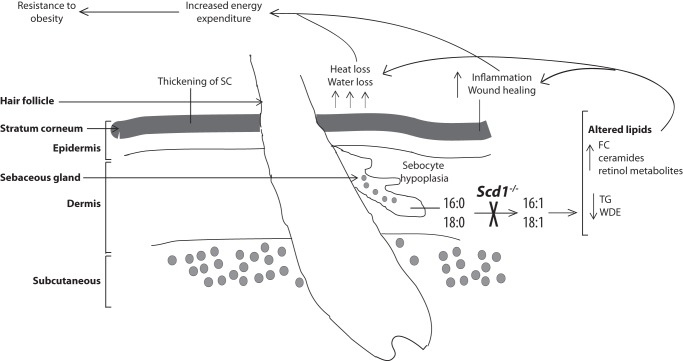FIGURE 1.
Cutaneous changes in SCD1-deficient mice and relationship to whole body energy expenditure: a model. The major cutaneous changes observed in SCD1-deficient animals are depicted. The inability to desaturate fatty acids, such as palmitate and stearate, results in hypoplastic sebaceous glands and a thickened stratum corneum (SC). A concurrent increase in free cholesterol (FC), ceramides, and retinol metabolites, along with a significant depletion of TG and wax diesters (WDE), in the skin of SCD1-deficient mice accompanies various cutaneous phenotypes, including increased inflammation and heat and water loss across the surface of the skin. These cutaneous phenotypes appear to be causally linked to the favorable metabolic phenotype of SCD1-deficient mice, potentially due to an increase in energetic demand for body temperature maintenance or due to the energy-intensive nature of cutaneous wound healing.

